All new paint colours for the latest Panamera are available for even more variety.
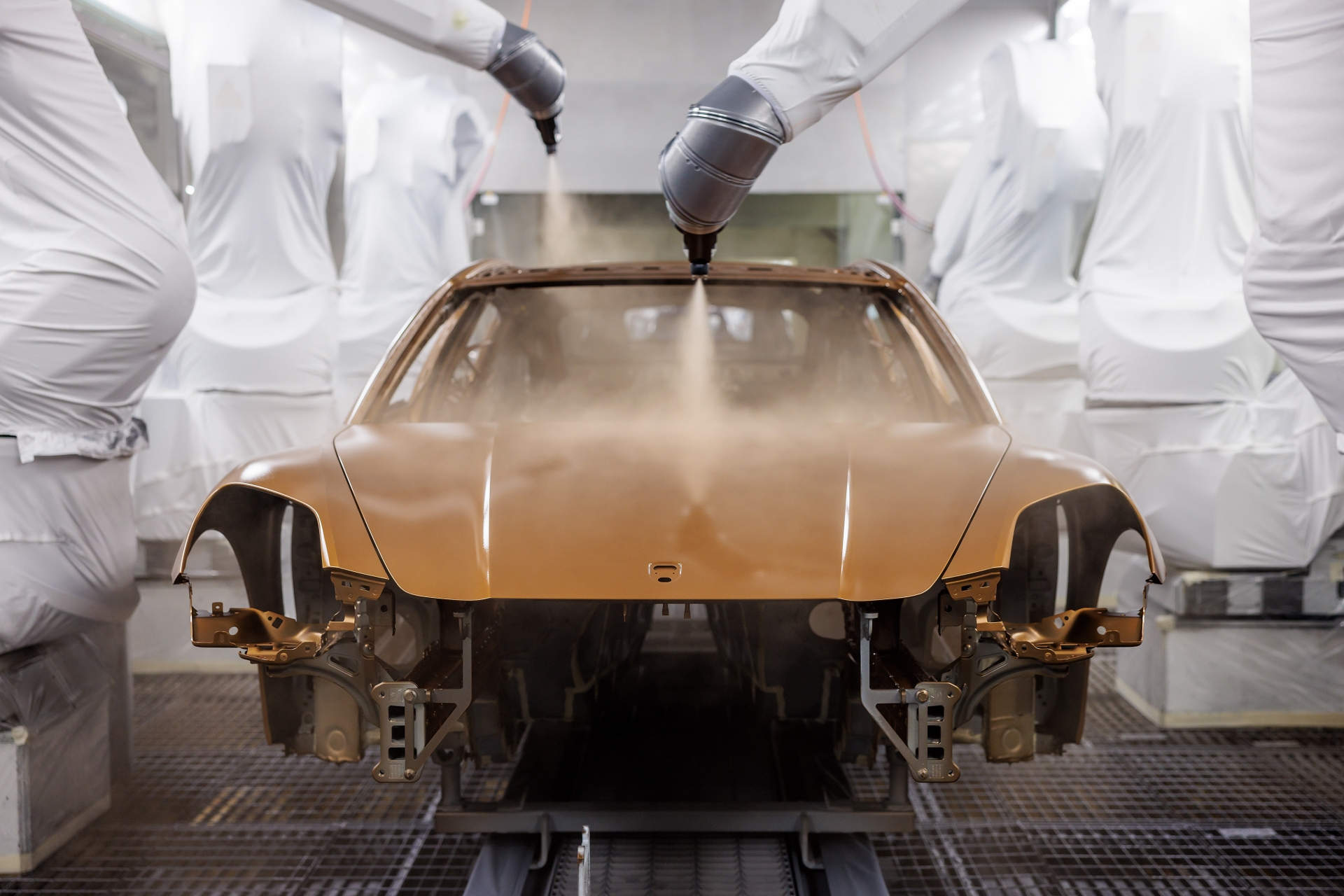
A fresh colour programme is now available for the latest-generation Porsche Panamera. These include but are not limited to Montego Blue Metallic, Ice Grey Metallic, Lugano Blue and Madeira Gold Metallic.
Madeira Gold Metallic, for example, is a warm, cognac-hued colour tone that evokes a golden autumn. Subtle effect pigments create a metallic brilliance and underline the overall effect of high performance and elegance.
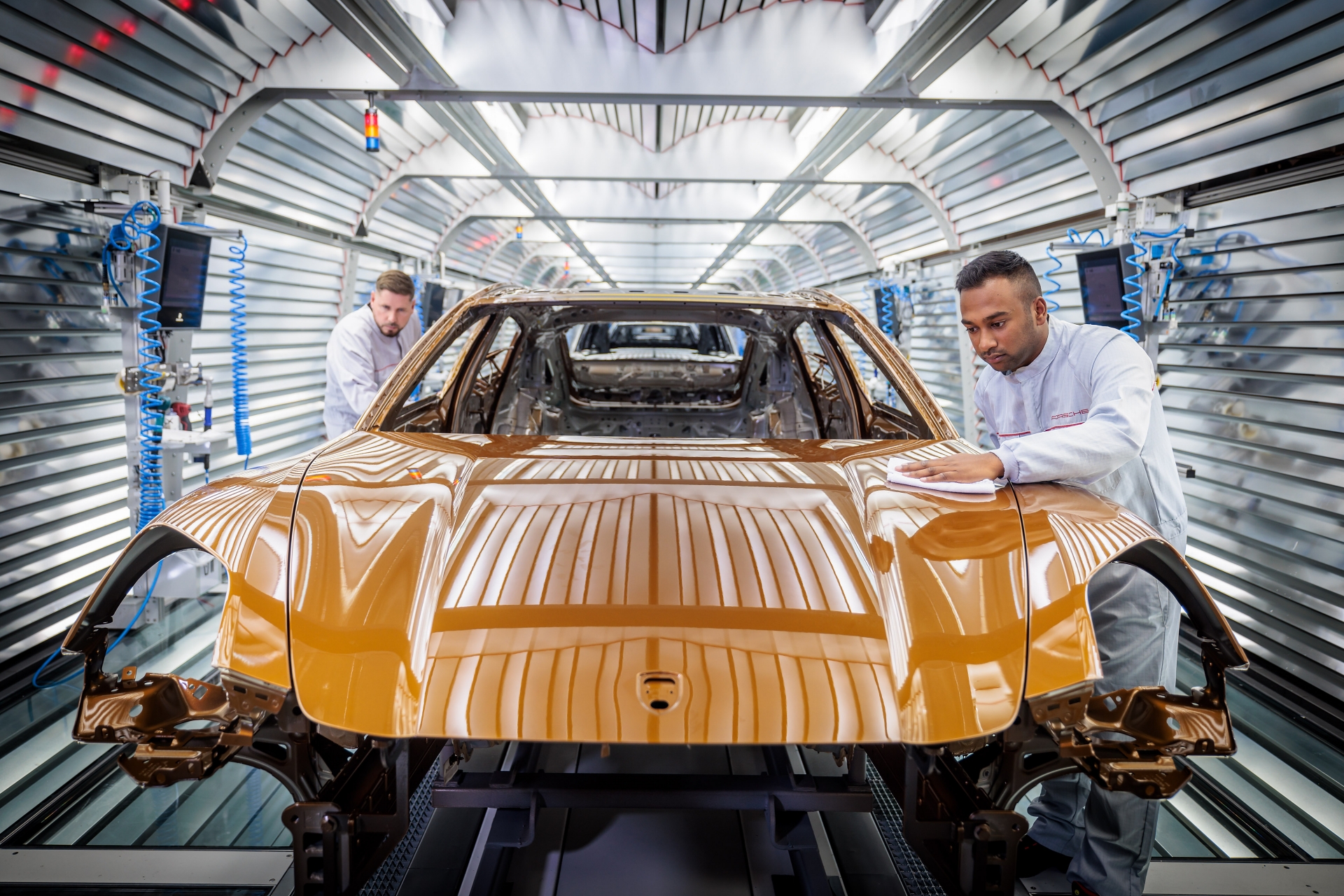
In conjunction with the new paints, Porsche has also restructured the range of series, metallic and special colours across all model series. The new categories: Contrasts, Shades, Dreams and Legends. These reflect a variety of topics, and their emotional labels make it easier for the customer to choose a colour.
Contrasts comprises particularly classic and timeless colours. Black and white, for example, create maximum contrast. On the other hand, various shadings of white, grey and black fall into the Shades category, which also includes silver tones such as the new Ice Grey Metallic paint.
The Dreams category brings strong, bright, striking colours. New Dreams paints include Lugano Blue and Madeira Gold Metallic. Finally, the Legends category brings together unusual colours with a certain je ne sais quoi. Examples include Montego Blue Metallic, Oak Green Metallic Neo and Slate Grey Neo.
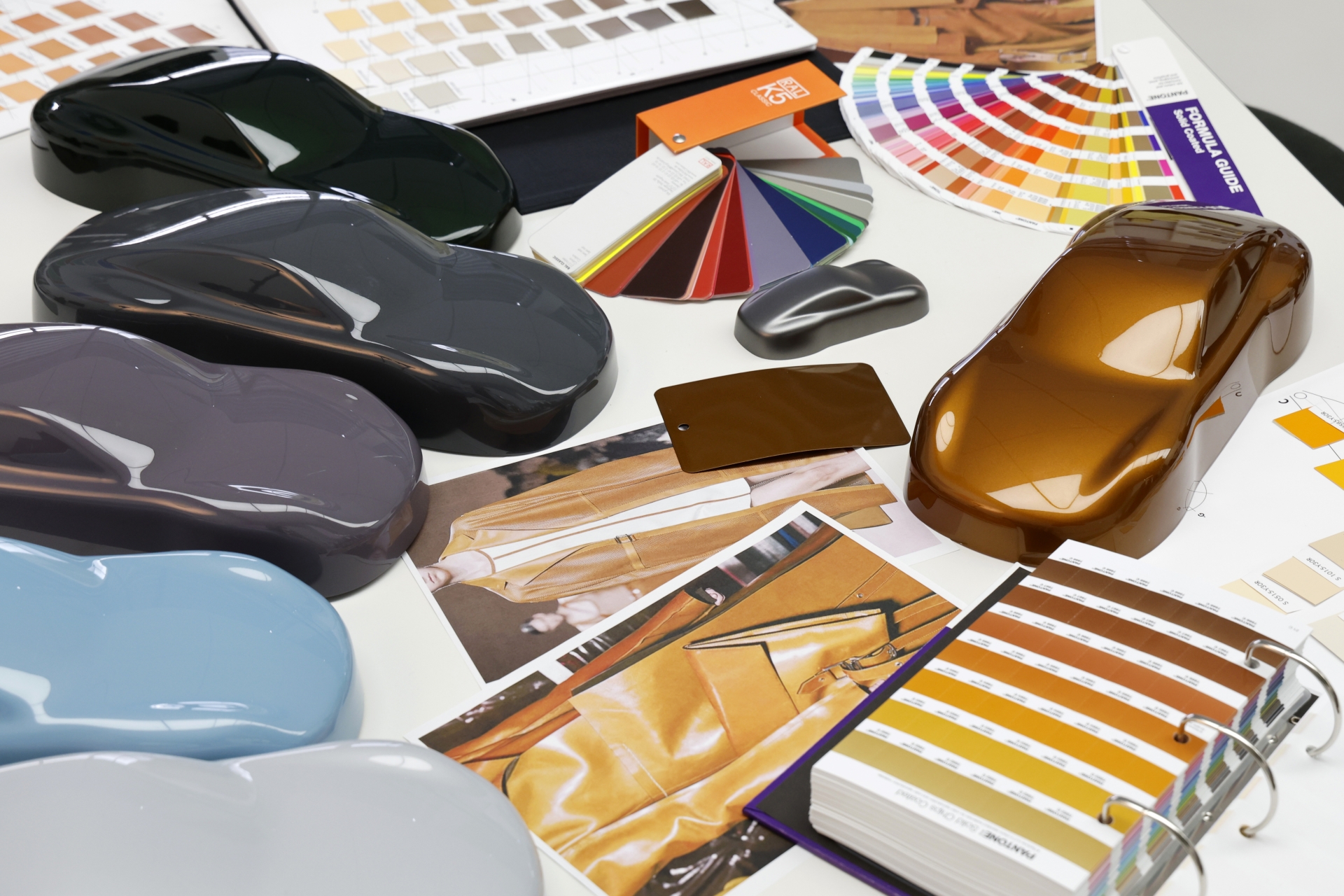
Of course, there will be customers who want more. Alongside the series colour programme, Porsche offers even more individualised paints with "Paint to Sample" and “Paint to Sample Plus." With "Paint to Sample", the focus is on the availability of classic Porsche colours recognisable from Porsche’s history, with more than 170 colours available across all model series. "Paint to Sample Plus" also offers the option to create totally individual colours based on customer specifications.
But how are these new paint colours made?
Naturally, it takes years to develop and make available a new paint scheme. Such lengthy procedures mean that the experts at Style Porsche always have to be ahead of their time. “A new colour has to be more than just a trend – it has to establish itself over a longer period,” emphasises Volker Müller, Head of Colour & Trim at Style Porsche. “We therefore have to identify trends early and sometimes set these trends ourselves.”
“We actually have it easy, because every colour looks good on a Porsche,” said Daniela Milošević, Colour & Trim Designer at Style Porsche, with a smile. A selection process is conducted nonetheless. From the approximately 12 to 15 new colours designed by the team every year, the overall Executive Board chooses the colours to be developed further. If these paints prove to be technically feasible, they go into series production in the following three years.
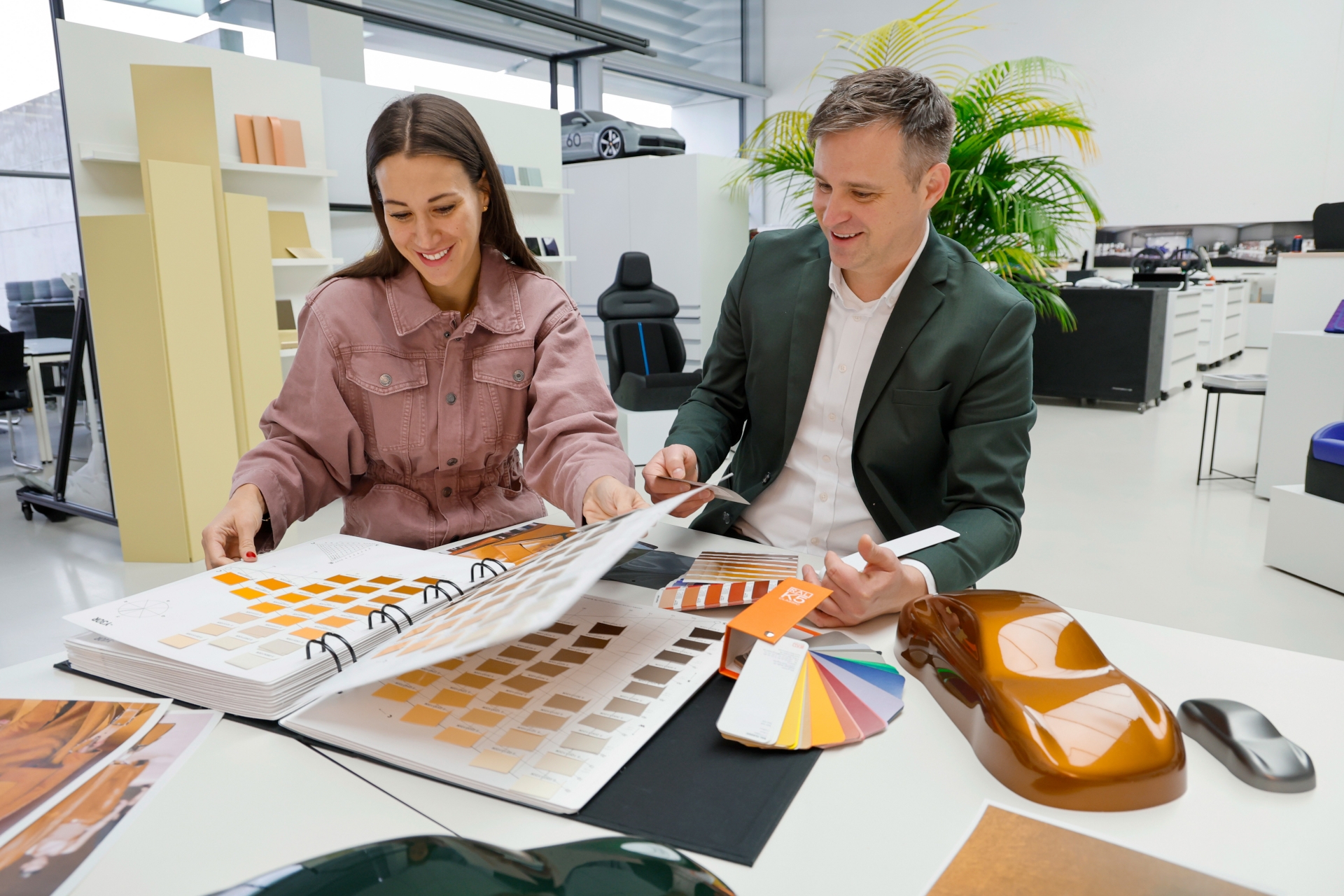
During the research for new colour topics, so-called mood boards are created – visual representations of concepts and visions. The tools used here
include an internal workshop among the designers in which new colour and material topics are discussed and new ideas created.
Only then do suppliers enter the picture. “We present our colour ideas to the paint suppliers and discuss them topic by topic. It’s a fruitful discussion because even more wonderful ideas emerge during this creative process,” says Milošević.
“The suppliers work out the new colours for us using a range of colour pigments,” explains Müller. Specifically, this leads to different interpretations
of colour and multiple colour-tone creations. Naturally, the colour ideas must be technically feasible and correspond to the demands of each individual market worldwide. Furthermore, an exterior colour must also be in harmony with the interior and has to go well with leather, Race-Tex and other fabrics.
The next step involves painting "colour frogs" in the respective colours. These are miniature cars in the form of a current 911 that enable the effect of the colours on a larger 3D body to be photo-realistically assessed on a 16-meter-wide LED screen, where exterior colours of new model series or derivatives can be changed at the push of a button.
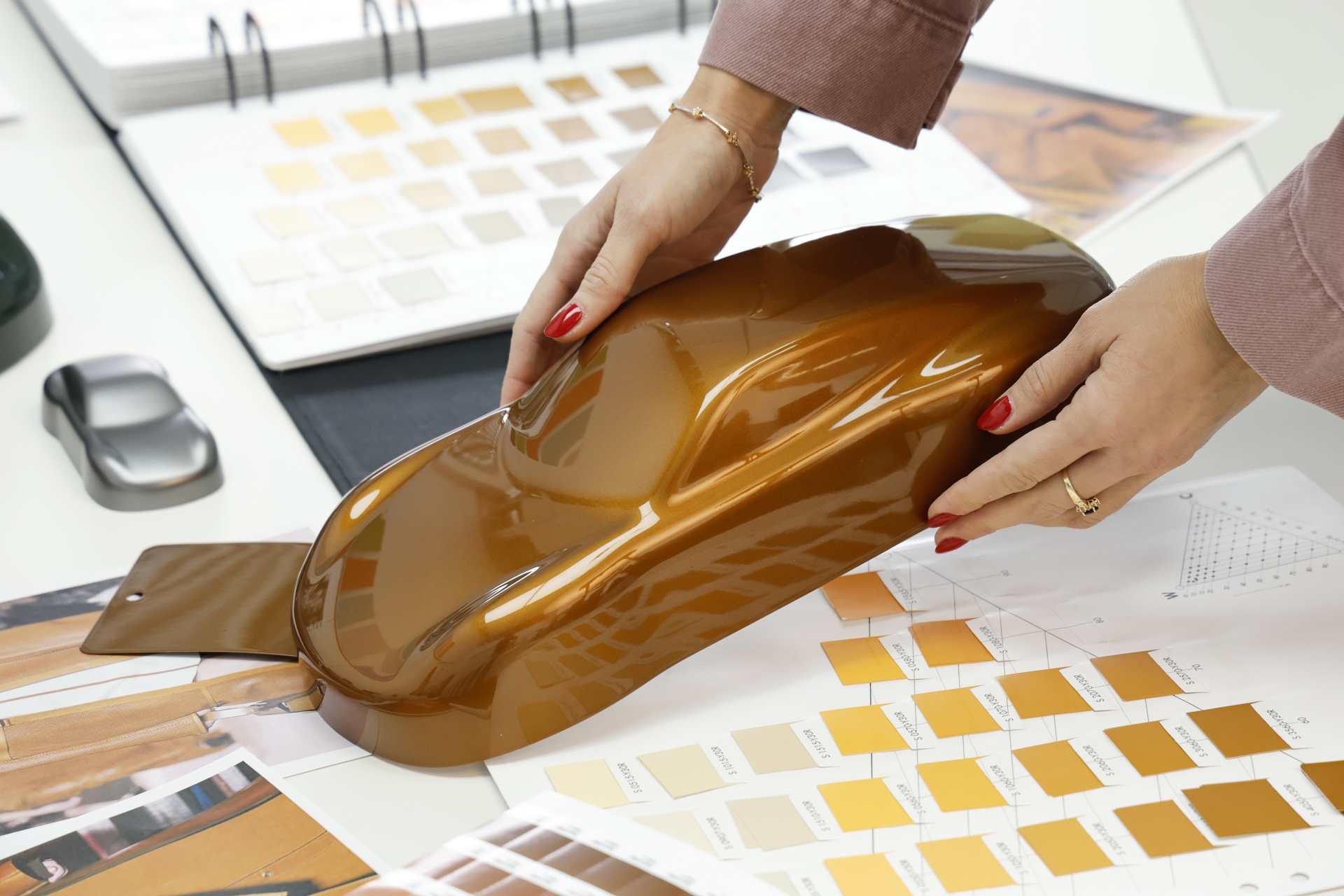
Of course, the final decision on whether to run with a new colour idea or not falls to the overall Executive Board. A painted car is presented for each colour.
The top management of Porsche evaluates the cars both in daylight and visualised digitally on various derivatives on the LED screen in the studio’s own presentation hall.
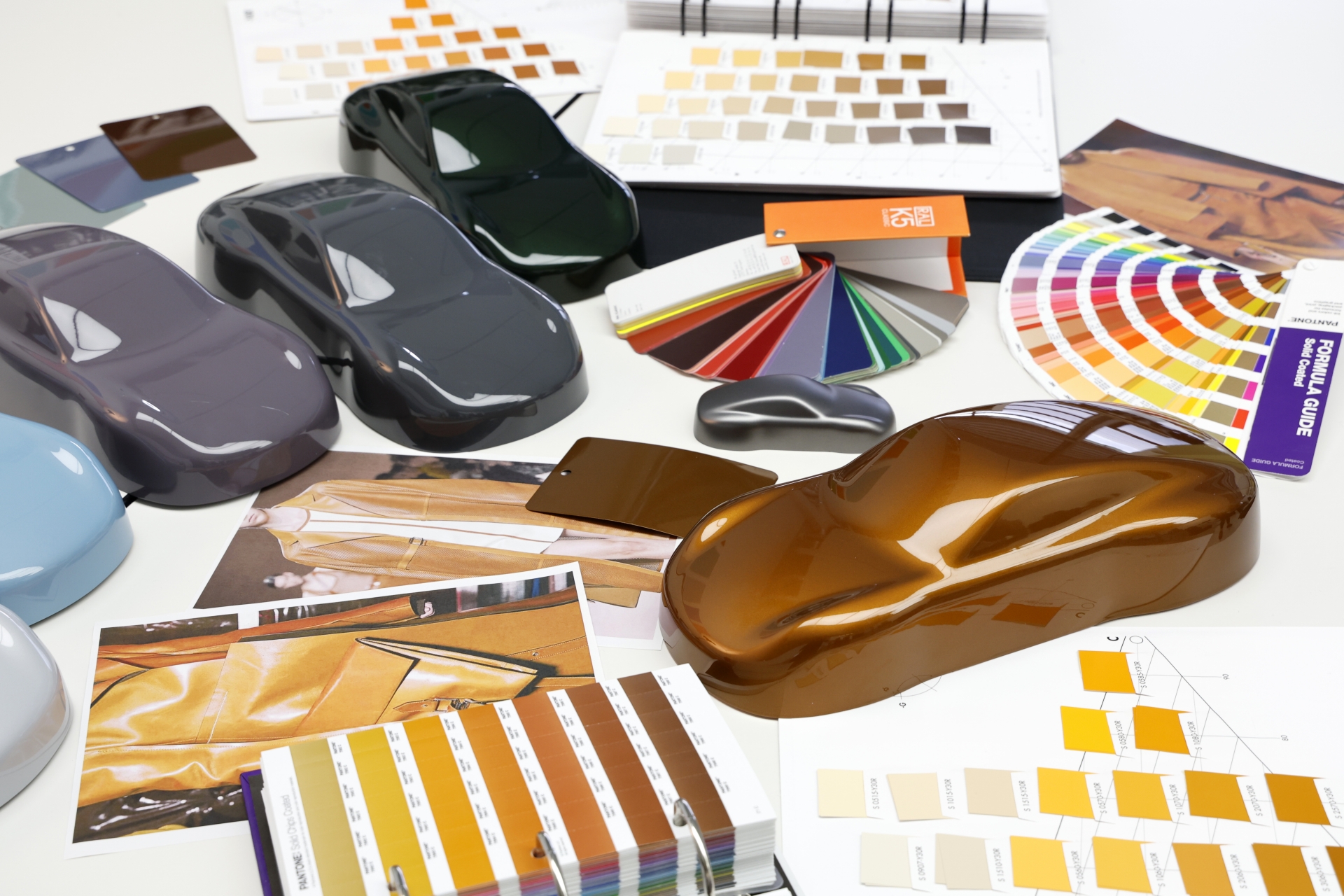
This is where things move up a notch into a slightly larger scale. A medium-sized paint batch of around 50 to 100 kilograms is produced, which is then used to paint around 300 steel plates. These plates are known as "original samples" and become colour references for suppliers of add-on parts. Colour matching is crucial since colours behave fundamentally differently on metals and plastics.
Things don't end there. A rigorous series of tests and safeguards go into effect to ensure that the new paints lay onto a car's bodywork without colour deviations from being atomised in the spray guns. Ambient conditions and paint robot specifications also affect how paint is sprayed and cured, so processes need to be tailored to each individual factory.
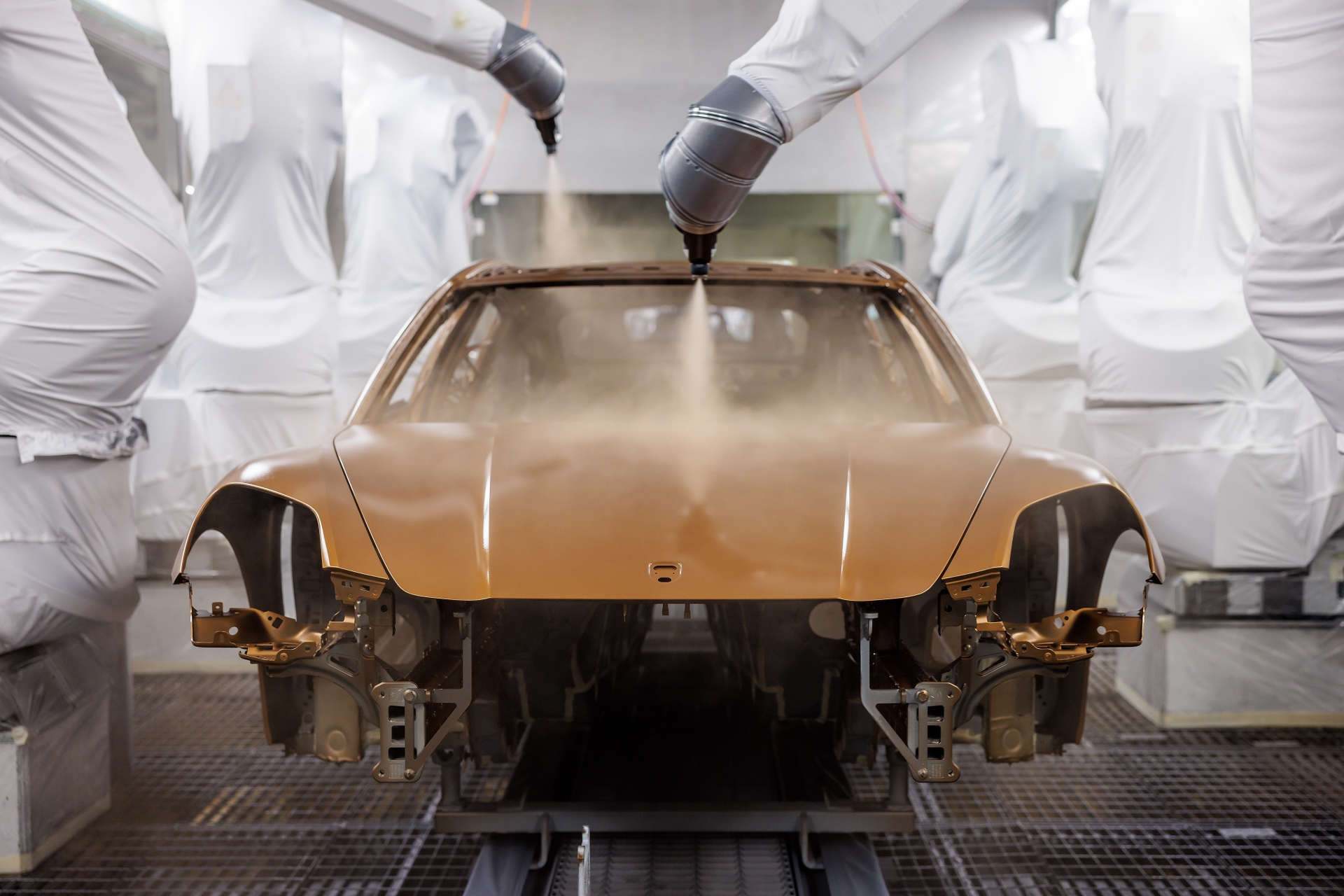
Finally, to ensure new paint colours will withstand the test of time and nature, the sample plates are irradiated with strong UV light for 3,200 hours, which is analogous to a year's worth of direct sunlight exposure in Florida.
The testing process also includes fire protection, stone impact and saltwater tests.
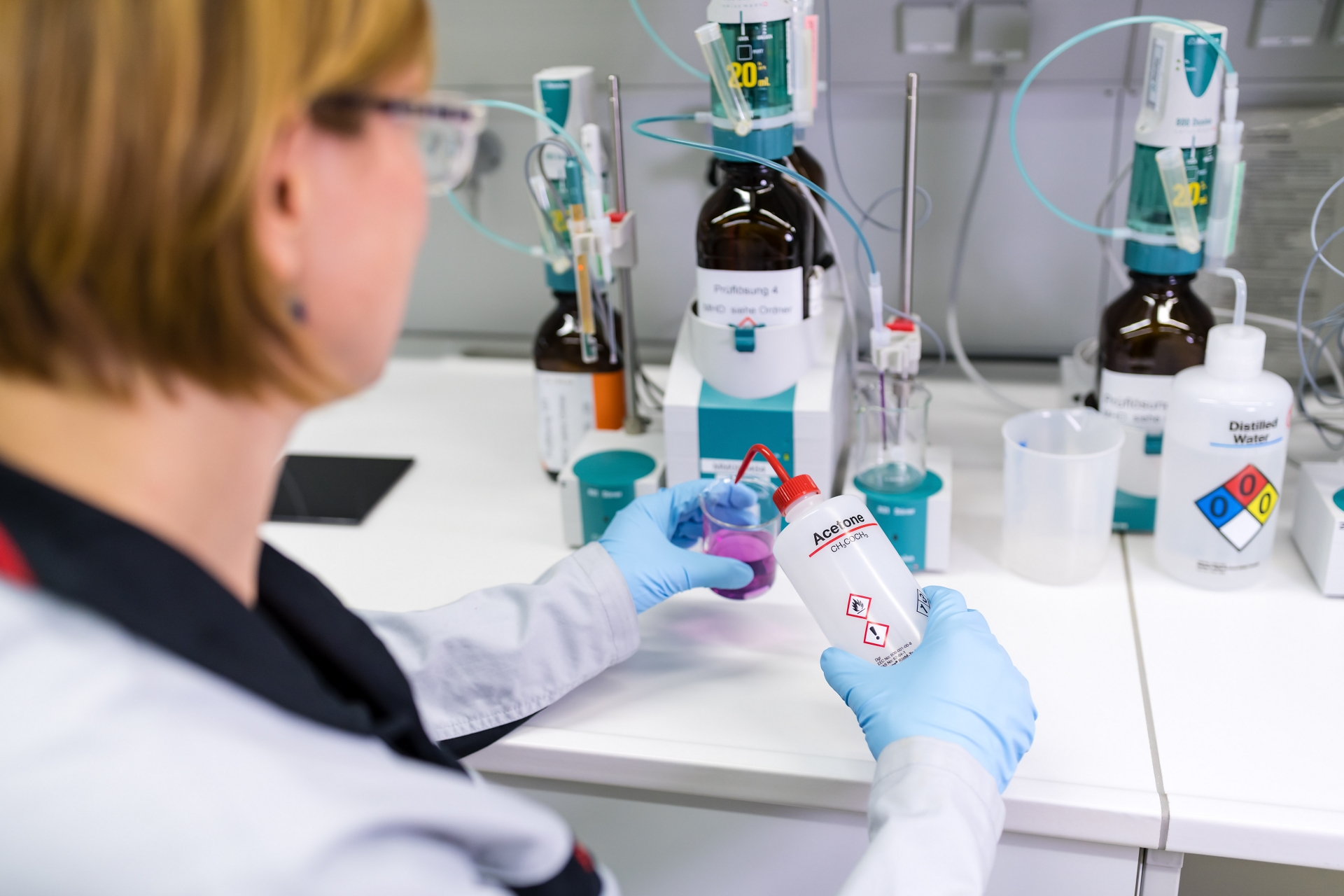
Things are not as simple as just mixing up a new colour and "slapping it on."
Photo Credits: Porsche
